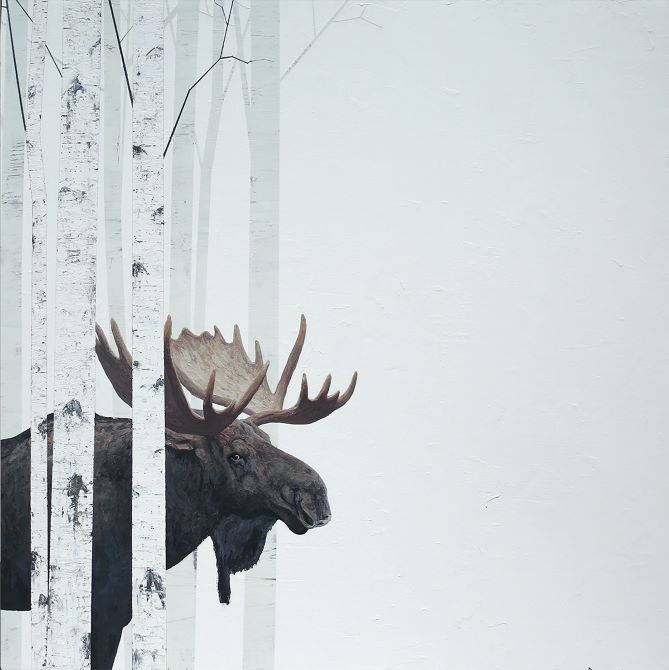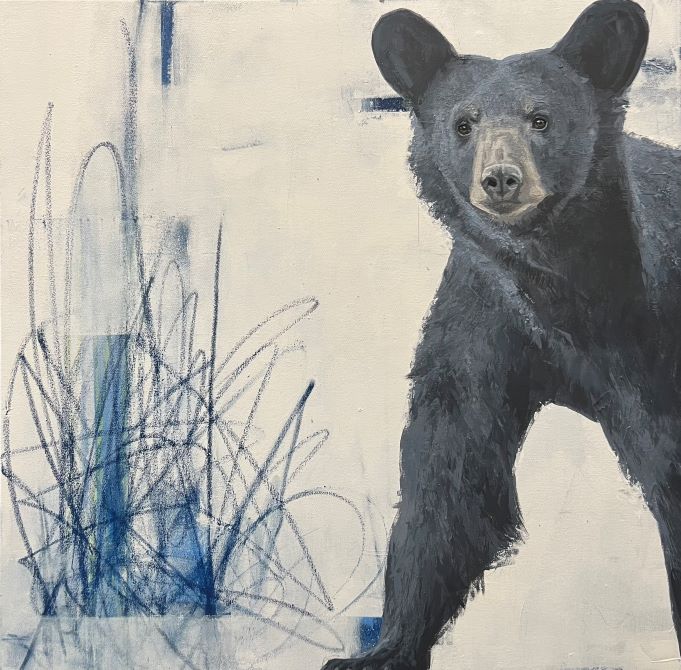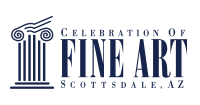For a kid growing up in northern England, there was nothing more exotic and intriguing than depictions of the American West. At least that was the case for artist Andrew Bolam, who recalls watching the Lone Ranger and John Wayne and fantasizing about what it would be like to roam amongst buffalos, cowboys and Native Americans. Now, as an adult, this fascination comes to life through his artwork.
As Andrew tells it, he grew up holding a pencil. Drawing and watching old Westerns were his favorite pastimes. And his natural talent for art came through at an early age. In high school, Andrew was one of just 11 students among 1,600 selected for a special art class. It was during that class that he knew art would forever be a part of his life.
Eventually, Andrew found his way out West––to the land he dreamed about as a child. Initially, he spent several years running a gallery before opening his own, which he operated for two decades. Eventually, however, he heeded the pull he was feeling to paint and draw the subjects that fascinated him––and that was the people, places and animals of the West.
In this interview, Andrew shares what he loves most about the creative process and how he approaches his subject matter in a unique way.
Q&A with Andrew:
When did you know art was your calling?
I grew up holding a pencil. I was nonstop drawing as a kid. In high school, in England, when I was 14 years old, I was chosen to be in a kind of special art class. I remember in the first class, which was the most promising art students out of a school of 1,600 kids, the teacher said, ‘Out of this giant school, you guys are probably the 11 most gifted kids. And out of all of you, maybe even not even one of you might make it as an artist, but maybe there’s a chance for one of you.’
I remember––and I don’t know why because I didn’t have any reason to believe it––I thought, ‘It’s going to be me.’ So, that was kind of when I first started thinking I would do something in the arts. I didn’t know what it would be, but I knew I was going to do something with my drawing skills.
How has your creative journey evolved?
I started working as a graphic designer and an illustrator. With that, I worked mostly in guache and a little bit of acrylic. When I transitioned into painting, I worked in oils and I worked in oils for a good 15 years or more. About a decade ago, I had a project I was working on that involved a lot of layers and sanding. I was trying to create modern-day cave paintings––that was the idea for the series. As I got into the series, I started thinking, this is going to have to be done with acrylic. So I did the whole series in acrylic and when I finished, I knew didn’t want to ever go back to working with oil paints––the smell of it and having to wear gloves. So I stuck with acrylic and have learned how to do pretty much everything I was doing with oils, but in acrylic.
What do you love most about the creative process?
I love the agony and the ecstasy. I love going into the studio and getting my ass kicked by a painting, and just working on it and battling with it. Then finally bringing it back to a place where I know I’m going to be happy with it. And feeling that sense of accomplishment––the feeling that I can conjure up an idea out of pure inspiration from outside of myself, and I can go into my studio and use all the skills that I’ve developed over the years to kind of translate what’s in my imagination onto a canvas. At the end of a studio session or a few studio sessions, I can step back and see this thing that I could see in my head is now a living thing that other people can see. There’s something really extraordinary about that––that feeling of being able to share with the world this inner journey that we artists go on.
What is the most rewarding aspect of what you do?
I’ve been doing this a long time and I’m still extremely excited and grateful for every single collector and every single piece that sells. It just tickles me that strangers, and now people who I’ve gotten to know over the years, like my work enough to spend money on it. That’s kind of amazing.
But the second answer to that question is I don’t spend a lot of time thinking about that because if an artist allows the end-user process to infiltrate their work, it can have the effect of changing the work and not for the better. If you start allowing other people’s ideas and thoughts into your head when you’re creating, then all of a sudden, you’re starting to create for the marketplace rather than create for yourself. So, I always think to myself, I’m doing this exclusively for me. What do I want to see in the world? If I were looking for a piece of artwork for my home, what would I want it to be?
Then I create that piece knowing that not everyone in the world is going to like it. Not everyone’s going to get it. Not everyone’s going to be into it, but there might be one other person who has similar thoughts to me out of a planet of 7 billion people. And that one person, if they see it, they’re going to want to have it. So, I try not to paint to the marketplace or paint for people. I just try to please myself. I’ve been fortunate that there’s always one person out there who has to have it.
What inspires your chosen subject matter?
The subject matter that I work on really stems from my five-year-old little self. I was a kid growing up in northern England, fascinated with western movies and loved all the western TV shows––the Lone Ranger and all of the John Wayne movies. I grew up watching these TV shows and movies about the West, that for a little kid in England, the most exotic thing you can imagine is cowboys and Native Americans and buffalo wandering through Yellowstone. Wildlife documentaries also captured my imagination as a kid. So, as an adult artist, what I’m really trying to do is tap into that childhood fascination with the subject matter whilst bringing some sort of adult ideas around fine art to the subject matter.
I’m really fascinated with visual cognition, how we interpret data that we collect with our eyes, and how we can put together abstract shapes and marks and they collect together to resolve into a representational image. So, with all of my paintings, there’s implied detail. I’m building layers and shapes into, and arranging, them in such a way that they become an image that we all recognize. But I want to leave enough lack of information on the canvas that when you see it up close, you can think to yourself, “Gosh, it’s just paint on canvas.” I never use little brushes and I don’t fill in every detail. I want the image to resolve from a distance into something. But up close, I want it to be something else.
I like to work with split compliments and analogous color schemes. I don’t use a lot of direct compliments in my work, and so I’m building all of that into the image that I want you to see. But I also want you to just appreciate it for being paint on canvas. I’m trying to do that with all of the paintings that I work on. Every series has that kind of through thread, if you will.
What brought you to the Celebration of Fine Art?
Hands down the other artists. Being in a tent with a hundred artists all doing totally different things has been incredibly inspiring. I love wandering around the tent and seeing what other people are working on. I love seeing stuff that I’d never seen before and artists doing amazing things that I would’ve never seen if it hadn’t been for the show. This has been a really fun few months and I can’t believe it’s almost over. I’m just getting started.



